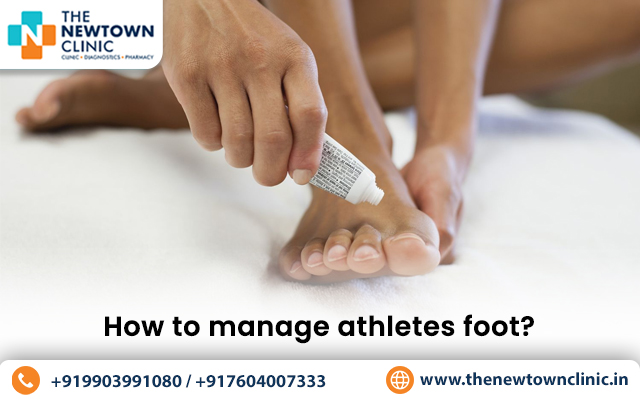Athlete’s foot refers to a fungal infection that is characterised by an itchy and burning rash on either or both feet. This type of condition usually affects the skin between the toes but may also have an impact on the soles and heels of the feet as well. The best dermatology clinic in Newtown helps in revitalising your skin by treating problems associated with it.
Types of Athlete’s foot
The different types of Athlete’s foot are as follows:
- Toe web
The infection affects the skin between the fourth and fifth toes. You may observe alterations in skin colour and flaking in this area.
- Moccasin
This particular variant impacts the soles, heels and edges of the feet. Initial symptoms may include soreness followed by cracking of the skin on the soles.
- Vesicular
A vesicular-type infection that usually affects the soles but may appear anywhere on the feet as well. It involves the presence of bumps or blisters.
- Ulcerative
This condition is rare and is marked by open sores appearing between the toes. This is a severe form of Athlete’s foot, visit the best dermatology clinic in Newtown to check and treat its progress.
Prevention of Athlete’s foot
In order to alleviate the symptoms that are linked to Athlete’s foot or prevent a recurrence, one must consider the following tips:
- Maintain hygiene
Clean your feet regularly with soap and water as well as towel-dry the parts between the toes gently. Try and avoid keeping your feet wet for prolonged periods of time.
- Use antifungal products
Using over-the-counter antifungal creams or sprays may aid in treating an athlete’s foot. However, ensure to follow the instructions carefully that are on the product packaging.
- Wear clean socks
Change your socks on a regular basis and keep your feet dry by wearing moisture-absorbing socks. This is a necessity for individuals whose feet become very sweaty.
- Wear clean shoes
Alternate between different shoe pairs each day to permit adequate time for drying. Make sure to clean your shoes periodically to maintain cleanliness. Refrain from wearing shoes that are made of non-breathable material or are tight-fitting. Moreover, do not share your shoes and avoid wearing other people’s shoes, which may cause the fungus to spread.
- Practise good foot hygiene.
In public areas avoid walking barefoot, especially in communal showers and locker rooms where the fungus that causes Athlete’s foot can thrive. Wear shower shoes or sandals in such environments.
- Avoid scratching
Do not scratch the infected area; it may worsen the condition; instead, soothe itchy feet by soaking them in cool water.
Conclusion
Athlete’s foot usually responds to self-care and non-prescription products but if it persists then consider consulting doctors of the best dermatology clinic in Newtown.







